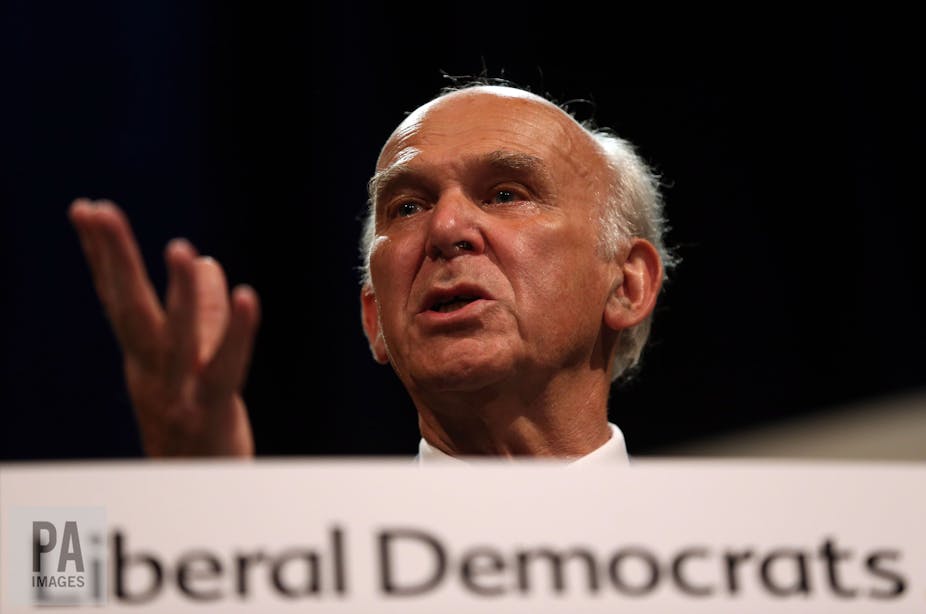As the Liberal Democrats met for their first conference since the 2017 general election, many were feeling disappointed at the state of things. The party came away with a mere 12 election victories after mistakenly believing the Brexit referendum had given it a branding which would help it capture more votes. Yet despite disappointment, party managers reported a higher than average conference attendance and membership numbers remain high.
Members met to reflect on the past, look to the future and begin working on how to take the party forward in an increasingly muddled political environment. Lib Dem conferences are a mix of decision-making votes and key note speeches and the leader’s speech is traditionally the final session of the event. This year that fell to Vince Cable.
Leaders’ conference speeches are difficult at the best of times. They have to communicate to party members in the hall, to (often) cynical journalists who have “heard it all before”, to members of the “political community”, and to potential voters, members and others who will only catch bits of the speech on the news. And whatever the leader wants to say, there will be questions which need to be answered and fires which need to be put out. Anyone reading the Alastair Campbell Diaries, or indeed the accounts of John Major’s time as Conservative party leader, will know just how fraught and last minute the speech preparations can be.
And of course if it is your first run out as Leader, the pressure is worse.
So today Cable had a lot to do. He had to look and sound like a leader, positioning both himself and his party in the most beneficial way. And he was certainly ambitious about it.

When, a few days before his speech, he told an interviewer that he does genuinely believe he can become prime minister, some may have thought that this was simply the answer to expect from a politician. But a theme which sprung out from Cable’s speech was government. “We are the government of the future,” he said at one point. And he ended with a call to head “back to government”.
This is actually quite risky. Many will remember David Steel’s rallying cry at the Liberal Assembly in 1981 when he called on members to “go back to your constituencies and prepare for government”. Government for the Liberals, now the Lib Dems, didn’t arrive until 2010, and only then because of the need for a coalition. The Steel phrase is often recalled with raised eyebrows at party conference. (It also became a regular in sketches at the Liberal Revue or the conference Glee Club.) And of course when Steel made his speech, the SDP Liberal Alliance was riding high in the polls.
So for Cable, head of the group of just 12 MPs, to make such a bold statement is a risky piece of positioning. But it is also necessary. For Lib Dems to have an obvious purpose, they must be seen as working towards that end. And that end must seem possible.
Safe pair of hands
Another theme of Cable’s speech was the need for people with experience who could take a grown up approach to things. He devoted significant time to talking about ministerial work and achievements. This is not an unknown practice for a political leader but it is a little unusual to look back more than two years. However, if Cable’s pitch is about being able to govern, there will be an ongoing need to stress examples of this work by key people such as Norman Lamb and Jo Swinson, both MPs, and Lynne Featherstone, now in the House of Lords.
As ever in a Leader’s speech there were short points on issues which would go down well with the party and also garner soundbites. Donald Trump’s state visit should be cancelled, the hall was told. Votes at 16 would be the centre of the party’s campaign for political reform.
It’s never clear how to measure the success of a conference speech in a non-election year. Is it about membership increase, good media coverage, more donations, poll ratings? For this piece of positioning however, what will matter is whether the message can be credibly sustained over the years to come.

